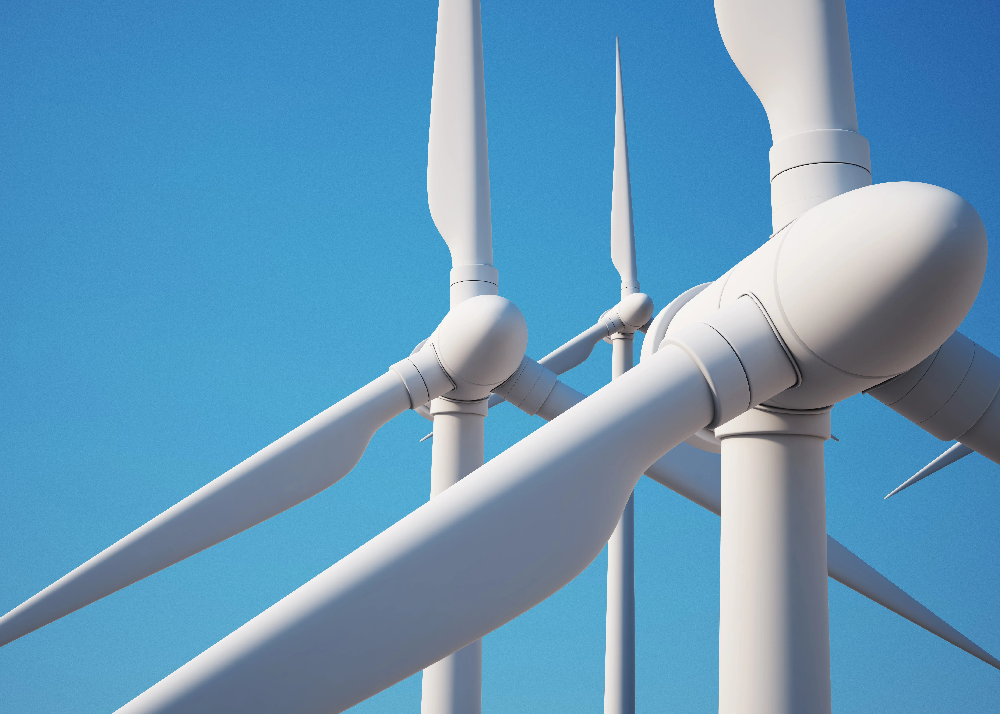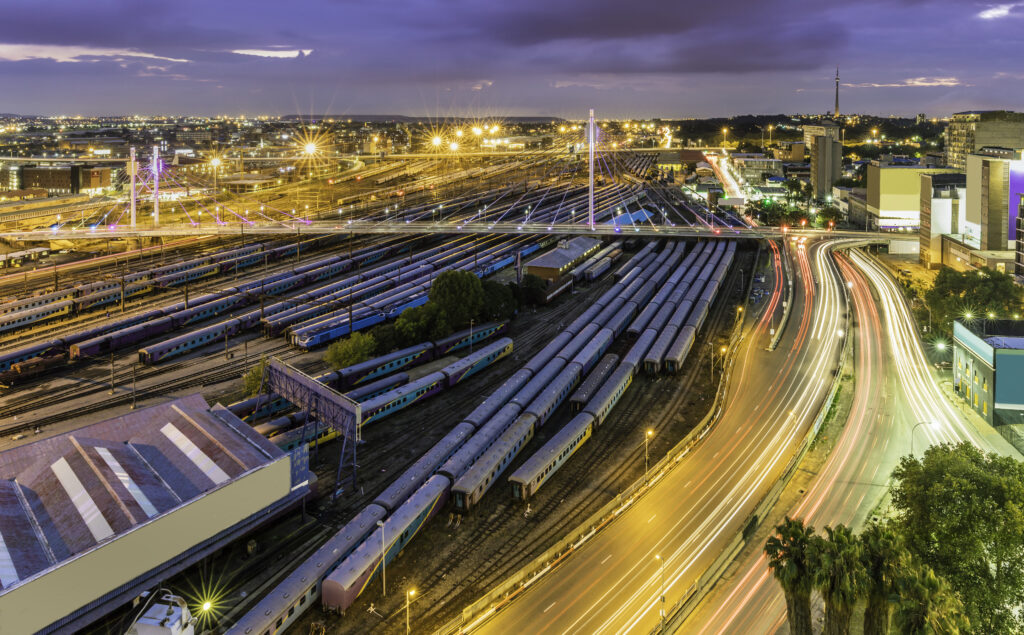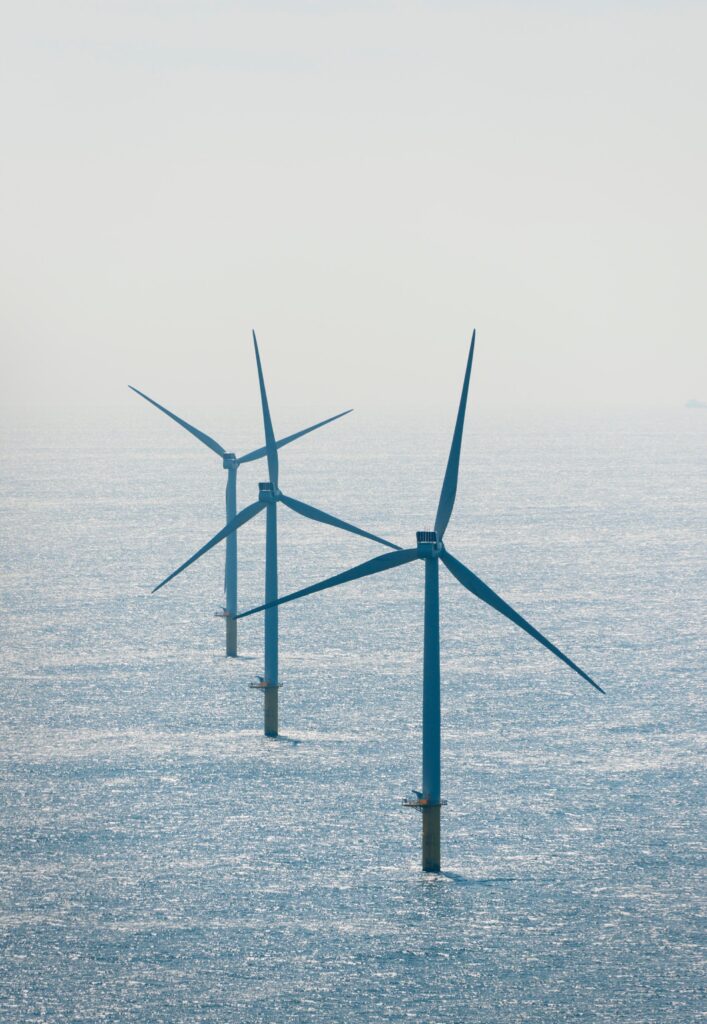Infracapital plans new course after challenging period
Write-downs in Infracapital’s third brownfield fund and outsized fibre investments have become a thorn in the manager’s side. It is embarking on a strategic path to manage its crisis. Stefano Berra reports.
On 6 May, one day before converging to Rotterdam for Infracapital’s annual general meeting, the fund manager’s LPs received an email from the firm with some big news.
Ed Clarke, one of the two founders of the infrastructure arm of M&G and its long-time chief investment officer, had decided to step down and retire after 24 years at the firm.
The move was the most significant yet in a far-reaching restructuring of one of the UK’s oldest infrastructure fund managers.
A lot had happened at Infracapital since its previous AGM in London in spring 2024, when the firm could point to a few successes.
Its second brownfield fund, the EUR 1bn Infracapital Partners II, had been about to complete its exits, delivering a healthy 22.6% gross IRR.
Executives put the spotlight on Zenobe, offering LPs a ride on an Infracapital-branded red double-decker electric bus to visit a cutting-edge depot in south London run by the battery and electric vehicle charging operator.
Zenobe’s valuation had jumped after a new investment at a high multiple by KKR a few months earlier, and the company was rapidly turning into one of the firm’s most successful investments – “almost like a venture capital play”, in the words of one source familiar with Infracapital.
But behind the scenes, trouble was brewing, and LPs were worried.
Infracapital’s largest fund to date, the EUR 2.1bn Infracapital Partners III brownfield fund, was performing nowhere near its predecessor after its valuation was slashed by 10.7% in the first quarter of 2024, according to LP documents.
As last year’s AGM was ongoing, the fund manager was trying to find a solution for Infrafibre, a struggling German fibre operator whose value was cut to zero in Q1. The manager “had a lot of questions from the more switched-on LPs” on how it valued its fibre assets and why it ran out of money for Infrafibre, said the source.
Last autumn, the manager eventually sold the German fibre company for a nominal equity value of just EUR 1, writing off almost all its investment. Fund III’s net IRR was firmly in negative territory, according to one LP.
This in turn raised doubts over the other seven fibre companies spread across all Infracapital’s funds. “The moment you have this situation on one asset, you cannot hide,” said the source familiar with the firm. “The next question is ‘You have eight assets in the [fibre] market, what about the others? How are you valuing them?’”
Several LPs were sceptical of the direction of travel and ruled against re-committing to the fourth brownfield fund, which closed at around EUR 600m against initial plans of a EUR 3bn target.
“Fund I and II were among the top performers of their peer group, really above target returns,” said one LP. “Fund III is a disaster.”

Leadership overhaul
To address investors’ concerns, last autumn the manager overhauled its leadership – appointing its head of greenfield investments, Andy Matthews, to replace Clarke as CIO – and reorganised its internal structure in a process that involved several redundancies.
But some investors saw the changes as “cosmetic” and wished for more decisive action. “There should be a change of the guard sooner or later,” said one LP in the weeks before Clarke’s exit.
Infracapital officially said as it announced Clarke’s retirement that the move was timed to follow the exits from the first two successful infrastructure funds, but sources familiar with the manager and LPs point out that the problems of the latest funds accelerated his departure.
His retirement came only months after Infracapital told Infralogic that Clarke would continue to lead the business together with his co-founder Martin Lennon after last autumn’s restructuring.
Clarke was a “trailblazer” of European infrastructure investment in the early 2000s, said Emmanuel Deblanc, M&G Investments’ CIO of private markets, the unit to which Infracapital belongs, in the announcement regarding his retirement.
After a first PPP-focused fund in 2002, Infracapital launched its inaugural brownfield fund in 2005, which invested in major companies such as Associated British Ports and Yorkshire Water and went on to deliver a 2.2x return on capital. Ten years later it added a separate strategy to target higher-returning greenfield projects.
“These funds opened the door to a much more dynamic investment universe in European private equity infrastructure investment,” added Deblanc.
Andy Matthews’ turnaround plan
While Lennon continues in his role as CEO, Matthews is now seen by the sources who spoke with Infralogic as the key person tasked with turning around the firm, which manages around GBP 6bn of infrastructure assets, as the new CIO.
In an interview with Infralogic that took place before Clarke’s retirement was announced, Matthews outlined some of his strategy ideas.
“I’m the new starter, I’ve only been here 10 years on the greenfield strategy,” quipped Matthews, who has worked in infrastructure investment for 40 years.
“My three pillars of the future are going to be: transport of all types; energy generation and infrastructure; and decarbonisation of industry,” he said. “That’s what we’ve been good at historically.”
Matthews pointed at Zenobe and Gridserve, another EV charging business, as examples of investments he wants to replicate. More fibre deals were conspicuously absent from his wish list.
The fourth brownfield fund has done two investments so far – in Dutch chemical storage business Liquid and French helicopter operator SAF Aerogroup. Matthews said he wants to focus on “stabilised, operating-through brownfield businesses” for the next deals, prioritising keeping risks under control over chasing higher IRR targets.
“I do listen to LPs, and they don’t want to be seduced with higher returns without really understanding the underlying risks,” said Matthews.
Winning back LP confidence is high up on the agenda, after several investors stayed away from fund IV. Infracapital declined to comment on the re-up rate, while Matthews pointed to broader challenges in the fundraising market, which have also affected many more managers.
“We could have kept going, but it’s distracting for the team,” he said. “The market was still pretty poor. It wasn’t evident where new capital would come from. So, we felt we had been in the market long enough, let’s stop, let’s take the capital we’ve got and show what we can do and then come back to market.”
Infracapital also suffered from slower allocation by local UK pension funds, amid their reform into larger pools. “That’s been a massive source of our capital historically and they’re definitely in review mode,” said Matthews.
Other UK managers have made up for the shortfall by tapping other markets, say Middle East wealth funds, Asian institutions and even retail investors – something that Infracapital has not pursued much so far. “Whilst that would be a longer-term strategy for us, it wasn’t really helpful in the short term for active fundraising,” added Matthews. “Certainly we will be talking to a broader base.”
Ultimately the main way to win back LP commitments is by selling assets and returning capital to investors, even though “it’s not a great market at the moment to test liquidity”, said Matthews.
“We’ve obviously got investors backing our greenfield strategy, if you want to do anything like that again, but they’re not going to re-up a third time until they see some liquidity,” said Matthews.
What went wrong with Fund III
While Matthews is keen to look at the future, other sources familiar with Infracapital said there is much soul-searching ongoing internally on what went wrong in the past.
How did the manager go from delivering a 22.6% IRR on one fund, to grappling with negative IRR on its successor?
Some external factors were partly to blame – first COVID, then inflation and rising interest rates. “But let’s be realistic, can you really blame COVID for problems in fibre?” said one LP, adding that infrastructure assets should protect investors from inflation and higher interest rates.
The immediate cause is to be found in the performance of two specific fund III assets, according to LPs.
Infrafibre was the main culprit. Infracapital bought two smaller German fibre operators in 2018 and 2020 and merged them to create the business. But the company was soon hit by a “perfect storm” of rising capex costs, problems with the management team, a lack of penetration, and overleveraging, said one LP.
Infrafibre was saddled with EUR 500m of debt and Infracapital’s fund did not have available liquidity to tide it over, even though the company was narrowing its EBITDA loss.
“So you have almost made it to break even, and then you run out [of capital] a year too early,” said one source familiar with the business. The result was a painful exit last October, with Infracapital recovering only about EUR 7m of its EUR 265m investment, according to one LP.
Neos Network, a company that provides backbone fibre to UK businesses, has also underperformed. Here the story is that of a corporate carve-out with a poor outcome, according to sources with knowledge of the investment.
Infracapital agreed to buy a 50% stake in the company in 2018 from utility SSE for GBP 380m, and one LP said that by the end of last year the investment was valued well below investment cost, after “a high-growth business plan was not achieved”.
The manager’s teams that had to explain the issues to investors “got murdered on this in the calls [with LPs],” said a source familiar with the firm. After the carve-out from SSE, the company faced higher standalone costs and failed to grow its revenues, with EBITDA soon falling into negative territory, he said.
“There was a lot of motivation to do something with SSE,” recalled the source. “[Infracapital] thought it could be a strategic move because they’re so big and could be a long-term partner, but [it] massively overpaid.” One LP said the latest valuation of the investment corroborates the claim, being at around 40% of cost.
LPs still worry that more assets might underperform. “The feeling is that the bad news isn’t over,” said one investor in the fund.
| Infracapital Partners III fund investments | ||
| Name | Country | Sector |
| Last Mile | UK | Electricity/gas distribution |
| GB Railfreight | UK | Rolling Stock |
| Infrafibre | Germany | Fibre Optic |
| Neos Networks | UK | Fibre Optic |
| Recharge Infra | Norway | EV Infrastructure |
| Inland Terminal Group | Netherlands | Ports |
| Source: Infracapital | ||
Recharge, a Nordic EV charging operator, is the latest to cause some concerns. “At the end of last year, [Infracapital] seemed confident about the asset, but in the last quarter they cut its valuation,” said the LP.
The Norway-headquartered company’s network is well established, with 4,500 active charging points, and benefits from a high EV penetration in the region. “But the business is not as stable as it was thought,” said another source with knowledge of the company. “It’s more of a retail play than people thought.”
Operational expenses have gone up to attract customers with “brand loyalty” initiatives because having a good location is no longer enough, said the source, and this means directing capital away from new installations and growth. “And ultimately you can’t rely on price,” he said. “There are Tesla superchargers that dictate the price. If they lower the price you have to lower it too.”
To be sure, the fall in valuation was limited to around 20%, and Recharge is still valued at around 1x, nowhere near the situation of the fibre assets. “It’s not a bad asset, but nothing astonishing,” added one LP.
There are also good investments in the fund. Last Mile Infrastructure, which operates electricity, gas and water utility connections in the UK, is performing well, with EBITDA more than doubling in the last five years.
Infracapital sold a 50% stake in the business to Macquarie in 2023, and last year raised EUR 220m of debt, which should allow it to more than double the number of its connections and grow further.
Inland Terminal Group, an operator of container barge terminals on Benelux’s waterways, and GB Railfreight, the UK’s third-largest rail freight operator that Infracapital bought in 2019, are also stable.
But LPs said this is not enough to balance out the bad assets in the fund. “To achieve a decent return, you need outliers to compensate for the underperformance of Infrafibre and Neos,” said one LP.
The fund’s net IRR was below 0% in Q1, said the LP, adding that he had received requests from buyers on the secondary market at discounts of as much as 15%.
Another LP said he expected the fund to generate a multiple on invested capital (MOIC) of about 0.9x-1.1x at exit, well below previous vintages.
“A fault from day one”
Beyond the individual assets, some investors think the issues stem from broader problems in portfolio construction – how the fund was invested in the first place.
“The fund had a commitment not to do more than 50% in the UK but went above that,” said one LP, pointing out that it also invested outsized tickets in its fibre assets relative to the fund’s size, which increased concentration risk.
Infracapital did not comment on the fund’s concentration limits, but a source close to the manager defended the two fibre investments, saying the businesses “offered very different services to a very different customer base in two different countries”.
The same source added the focus on UK investments was “impacted by the timing of Covid”, and by the need for extra capital for Last Mile’s growing business. Another source confirmed the sell-down of Last Mile was decided partly to reduce UK exposure, and because of its good valuation.
Matthews said in the interview with Infralogic that avoiding concentration issues will be a priority for the fourth fund. “We’re conscious of concentration risk and we’ve been talking to LPs about that,” he said. “Obviously we want to make sure we have diversification in the fund – geography, asset class, revenue style, etcetera.”
Another source said there was also too much greenfield risk for a brownfield fund without enough liquidity to handle cost overruns. “It had too many growth assets,” he said. “You cannot absorb [the risk] with yield from a stable asset because you don’t have any.”
It is harder to pinpoint why these investment decisions were taken. One LP said the fund “had a fault from day one”: it struggled to find good deals in continental Europe, particularly after Alberto Signori, “who was a good originator”, left for KKR in 2018 as the fund was starting to deploy its capital.
Four out of the fund’s six investments – including all three UK assets – were originated before new senior replacements arrived in late 2019, including managing directors Christophe Bordes and Herman Deetman. A source close to the manager said the new arrivals did originate the final two investments in Europe.
“The lack of origination capabilities pushed them to do big tickets on the deals they did in Europe and to do too much in the UK,” said the LP.
Whatever the reasons, scrutiny over the investment decisions fell primarily on Clarke, who as then-CIO was the person ultimately responsible for the strategy.
Top level decisions on asset management have not escaped scrutiny either, particularly with Infrafibre. “Did it really have to go that way?” asked one LP, referring to the forced sale and large write-down. “Was there really no other way to turn things around?”
| Fibre companies in which Infracapital has invested | ||
| Name | Country | Fund(s) used for investment |
| Gigaclear | UK | Infracapital Greenfield Partners I; Digital Infrastructure Investment Partners |
| Nexera | Poland | Infracapital Greenfield Partners I |
| WightFibre | UK | Infracapital Greenfield Partners I; Digital Infrastructure Investment Partners |
| Infrafibre Germany | Germany | Infracapital Partners III |
| Fibrus | UK | Infracapital Greenfield Partners II |
| Ogi | UK | Digital Infrastructure Investment Partners; Infracapital Greenfield Partners II |
| Speed Connect Austria | Austria | Infracapital Greenfield Partners II |
| Neos Networks | UK | Infracapital Partners III; Digital Infrastructure Investment Partners |
| Sources: Infracapital, Infralogic | ||
With the benefit of hindsight, more decisive action could have been taken when problems were starting to emerge. In 2022, Infracapital launched a so-called “annex fund” to raise additional investment for some of fund III’s most capital-hungry companies, including Infrafibre.
It received indicative offers from investors that valued assets below their net asset value but above cost, but ultimately shelved the fund.
“It was a way to fix all issues in one go,” said one source. “But they didn’t like the valuation and so they didn’t do it. It was a missed opportunity.”
One LP questioned whether the internal set up of Infracapital played a role. M&G fully owns the business and everyone else is an employee, including the founders. This is different from most other infrastructure funds managers, which are based on a partnership model where senior executives typically own stakes in the GP and share the risks and rewards.
A source close to Infracapital insisted that the incentives of the senior team “have always been aligned” with those of the investors. But one LP said the founders “might have been able to take more drastic measures to turn around the funds”, if they had more skin in the game.
Restructuring plan in action
Now the immediate test is turning around Neos and making sure Recharge is back on track, and one LP said he has noticed some changes.
“They reinforced the team of each asset, moved people to monitor and improve the investments,” he said. “We have not seen improvements yet, but things don’t turn around so quickly. A lot of work needs to be done with the fund.”
Investors have also started to notice better communication lately. “It used to be a problem,” said another LP. “You used to find out the bad news when you received the official report after the end of quarter, without warning. This has changed now. There was probably a lot of pressure from investors, but now they call to update you a bit earlier.”
Despite their criticism over the handling of the funds, LPs who spoke with Infralogic said the restructuring that took place last autumn – merging brownfield, greenfield and asset management teams – was a step in the right direction.
“Combining the investment and asset management teams makes sense,” said one LP. “It creates full accountability from investment to realisation.”
Merging greenfield and brownfield teams was also a logical step as the line between the two strategies has blurred. “We started having similar assets, the greenfield assets have started becoming operationally brownfield assets,” said Matthews, while brownfield platforms often carry greenfield risk in their expansion plans.
“It’s been a massive change,” he added. “We found a huge efficiency gain, not only in people’s time, but actually in knowledge and data.”
One example is combining the teams working on EV charging businesses Recharge, which has experience in the mature Norwegian market, and Gridserve, which is starting out in the UK and sits in the second greenfield fund. “We can now get them talking to each other,” said Matthews.
“In all the meetings I’ve had with investors, they are seeing the energy I’ve put into this, and they’re seeing the energy that is coming out of it,” he said. “There’s a lot of engagement with LPs on the reorg, and they’re actually seeing the benefits of it.”

The change is being appreciated within the team too, according to Matthews. “I get a lot of personal enjoyment out of seeing people who are quite senior learning again, saying: ‘Gosh I didn’t know that’s how you thought about it, I didn’t realise that’s how the greenfield team dealt with construction contracts’,” he added.
But it’s not all rosy internally. One issue is that if the team “don’t see a significant upside they might think of leaving”, making the job of turning things around harder, said one LP.
At least 11 people including managing directors, directors and associate directors have already left in the past year, including through redundancies and voluntary exits, with the former brownfield and asset management teams hit particularly hard.
The most senior exits include managing directors James Harraway and Christophe Bordes from the brownfield team, while asset management MD Stephen Nelson retired last year and Steve Johnson took a role as external senior advisor.
The next greenfield chapter
On the fundraising front, the next big test will be on the next greenfield fund. Will LPs be spooked by the troubles of the brownfield strategy, or will they return to back the manager?
Matthews said he will “start thinking” towards the end of the year or early next year about a possible successor to Infracapital Greenfield Partners II (IGP II), which is almost entirely deployed.
He said IGP II’s high-growth energy companies such as Zenobe and Gridserve, as well as Project Marble, a rolling stock joint venture with Rock Rail, are promising investments that could draw LPs back for more.
“The success in the growth of those strategies undoubtedly will inform what we do next,” said Matthews. “LPs like you to do what you’re good at, and that’s certainly the two or three areas where we’ve really proven we can deliver.”
A spokesperson for Infracapital added in a statement: “We are fully focused on client outcomes by driving returns across our portfolios. The long-term investment case for infrastructure is underpinned by the energy transition and the need for decarbonization in sectors such as transport, where we have significant opportunities to invest further using our expertise in companies such as Zenobe and Inland Terminals Group.”
Not all assets in IGP II are performing well, to be sure, particularly Speed Connect Austria, which Infracapital is looking to sell at a steep discount, sources previously told Infralogic.
“We’re looking at various exit [options],” confirmed Matthews. “But at the moment we have downsized the size of the aspiration in Speed Connect.”
But before thinking about the next fund, Infracapital will have to deal with another major legacy investment – UK rural fibre operator Gigaclear – and ensure that the fund in which it sits, the GBP 1.25bn Infracapital Greenfield Partners I (IGP I), does not follow the fate of Infracapital Partners III.
“Greenfield I is a bigger issue now than brownfield III,” said one source familiar with Infracapital. “Gigaclear is much bigger than Infrafibre and it’s in the same situation. It’s way above the concentration limit [for the fund].”
Despite progress on rolling out its network and signing up customers, Gigaclear is still well below break-even and needs more capital to get there. The Infracapital fund that controls the company is fully deployed and can’t inject any more capital, so the firm has been looking elsewhere.
Equitix agreed to invest GBP 420m in 2023 in return for a minority stake in the company but walked away last year after injecting only the first GBP 50m, and Infracapital has been searching for new investment.
Matthews said the company is “knocking it out of the park” on the operational level, outperforming the market on penetration, and “has proven its essentiality, which is what we liked about the Gigaclear story”.
“But we have to replace the hole that Equitix left with us,” he admitted.
Matthews said the firm is working on a solution, although he would not be drawn on details. “We’re well advanced on that solution,” he said. “I’m reasonably confident that we’ll get that plan away. It will require equity and debt.”
To complicate matters, Gigaclear was already saddled with more than GBP 640m of debt at the end of 2023, with annual debt interest payments exceeding revenues during that year, its latest available accounts show.
“It’s at the stage where the fix can only be LPs taking pain and banks taking pain,” said the source familiar with the manager. “And if there’s no fix, then the value is zero because it goes insolvent.”
“This is the biggest issue in the whole franchise,” added the source. “If this doesn’t get sorted, everyone goes home.”
The holding value of Gigaclear has recently been marked down slightly, according to the source. IGP I is below target but has not taken a major hit so far, with documents by one LP in September 2024 still forecasting a long-term net IRR of 10.6% against a 15% target.
Although it has two more fibre assets – Nexera in Poland and Wightfibre in the UK – the first greenfield fund is in fact more diversified than brownfield III.
Infracapital has started to sell the fund’s assets, after LPs voted to divest after the initial greenfield phase rather than wait the full 25-year term. Two exits have already been agreed – Italian hospital PPP portfolio C2i and renewables platform Infram Energy – while at least four more are under way – including energy efficiency platform Cogenio and Nexera – or being prepared.
But with heightened scrutiny by LPs, Gigaclear is too big to fail for the firm.
The leadership of M&G, which has largely let Infracapital’s top management take decisions autonomously until now, has also started to pay more attention, sources say, despite claims from an M&G source that “nothing has changed” in the relationship.
While in the case of Infrafibre M&G was not closely involved for most of the process, “now Gigaclear is being handled very differently, with M&G driving it”, according to a source familiar with the discussions.
M&G’s private markets CIO Deblanc, who joined in January 2024 and has direct infrastructure finance experience from his earlier career at BNP Paribas, will be a key person in any future decision.
The question now is whether he and the rest of M&G’s leadership think the changes at the top implemented so far are enough to turn the ship around, or more action is needed.










